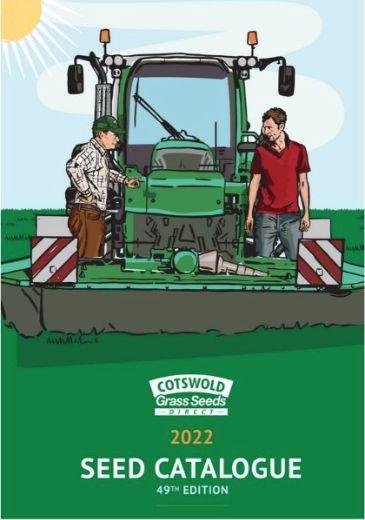This Issue









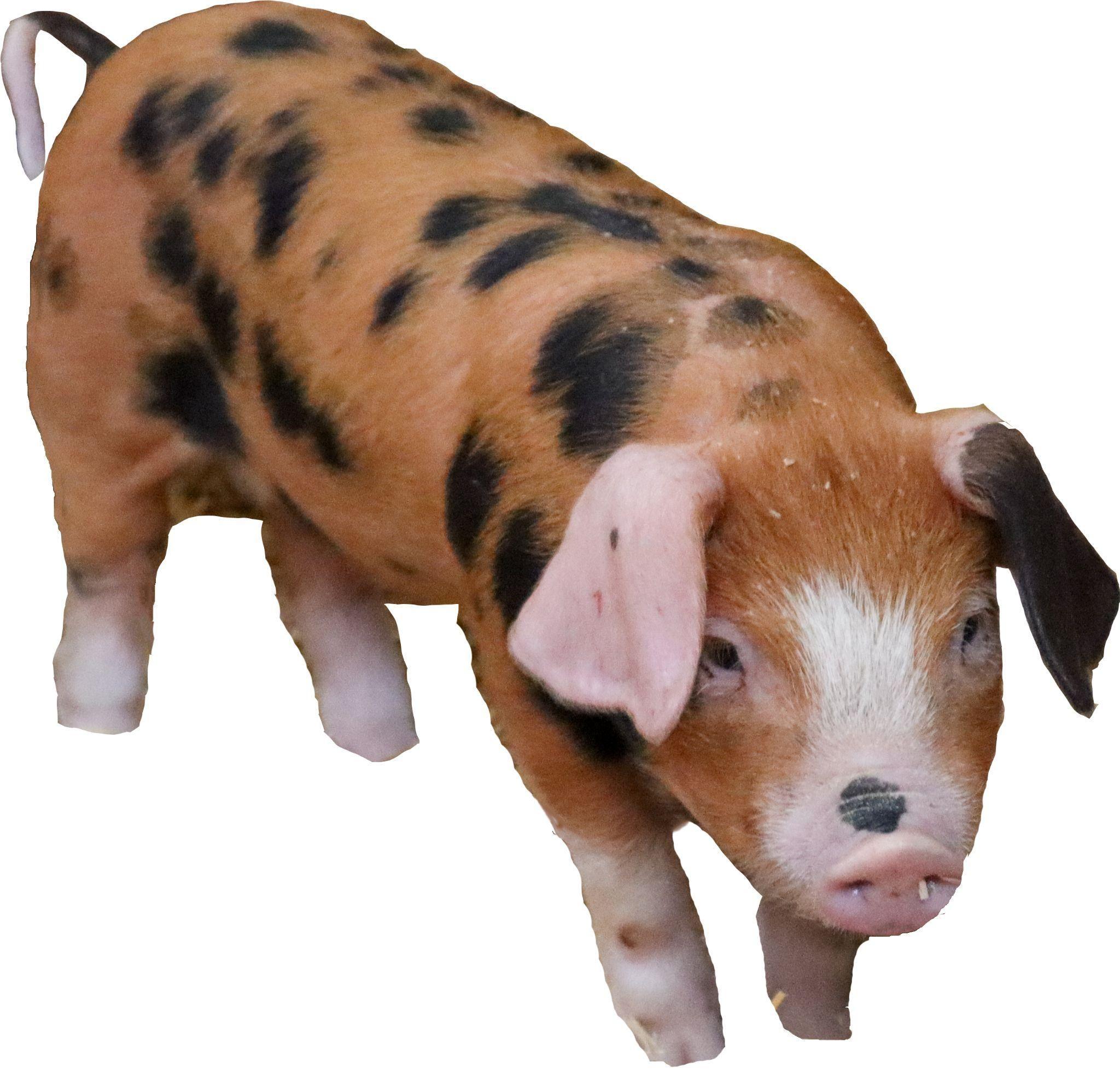
May has arrived with plenty to celebrate. Farrowings are in abundance, with strong litter sizes reflected in our data and OSB pork production has reached new highs — a real milestone for our breed.
These achievements are only possible thanks to the dedication and care of our breeders. Your hard work and commitment continue to drive the success of the Oxford Sandy and Black pig, and we are, as ever, truly grateful.
With continued support from the OSBPG Charity Independent Pork Producers, we are also able to build on our pork data, showing that OSB pork is growing in well-deserved recognition.
On the breeding front, numbers remain strong, and we are encouraged to see growth in breeder activity and demand. We are also excited to introduce the OSBPG Pork Development Team, who are working to create new ideas and opportunities for our independent pork producers.
This quarter, we cover key topics including proposed foodstuff bans from the EU, pig vet Louise Blenkhorn’s advice on scour, and a seasonal look at pigs' drinking behaviour as we head into Summer.
As always, if there is something you would like us to feature, please email us at hello@oxfordsandyblackpiggroup.org
Until next time, enjoy the sunshine, take care, and may all your livestock thrive in the coming months. The

Regardless how we keep our pigs whether it be small, large or commercially reared, compromised health leads to significant antimicrobial consumption and concerns for both welfare and productivity. Early detection of health and welfare issues allows for timely intervention, reduces morbidity and mortality rates, and improves the overall well-being of our pigs.
One of the key indicators of compromised health and welfare is an alteration in drinking behaviour and patterns. We can use this as a potential tool for disease monitoring in our pigs. Several factors impact this.Therefore, a detailed understanding of pigs’normal drinking behaviour and daytime (diurnal) variation will help to distinguish changes in the drinking behaviour and patterns caused by disease from those caused by other factors.
Water is an essential part of the nutritive and welfare requirements for pigs.The water intake follows a stable diurnal pattern. Different factors affect drinking patterns.These include drinker design, and the available flow of water in the drinking nipples. Other factors are diet, age, and temperature.
Starting at 22°C water intake will increase. Weight, production status, level of social competition, and health also contribute. Studies showed that increased competition around the drinker reduces the number of visits and time spent drinking per pig per day.

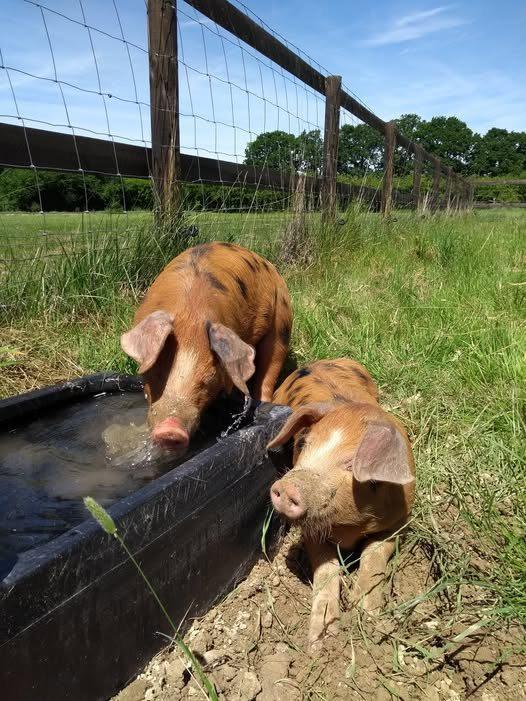
Astudy showed that in neonatal piglets, water comprises nearly 82% of body weight and decreases slightly to 66% for a 28-day old nursery pig. Early weaning (at 7 days of age which may be due to complications at birth) causes a higher drinking rate in 6 weeks later compared to those weaned at 14 and 28 days of age.
Drinking behaviour is defined as when a pig has its head in the drinker for 5 seconds or longer and it develops over the first few
days following weaning, with pigs engaging in 60 bouts that last less than 10 seconds.
Patterns are described as water disappearance, water consumption, and water wastage which are measured over a specific period of time and recorded to determine a usage pattern.A study by Brumm (2006) determined that in thermal-neutral conditions (< 26.7°C) pigs began drinking between 05:00 and 06:00 hours, with a peak in water disappearance early afternoon (14:00 hours) followed by a gradual decline from 16:00 to 22:00 hours.
When the temperature reaches 26.7°C or higher pigs alter their drinking patterns and drink earlier in the day with a morning peak from 08:00 to 09:00 hours followed by a gradual decline midday followed by a second peak between 17:00 to 20:00 hours.
Apig’s diurnal drinking pattern remains stable in a healthy state yet can change when affected by disease. By monitoring water usage, you are able to detect, say, a diarrhoea outbreak in young pigs approximately 1 day before the physical signs show.
Drinking increases in some metabolic diseases and in response to dehydration resulting from diarrhoea and stress.The frequency and duration of drinking behaviour is used to predict early stages of bacterial infections. For instance, a salmonella infection in pigs results in reduced drinking behaviour throughout the 4-week post-infection period. Clinical signs indicating that pigs are not receiving enough water or are choosing not to drink include dry faeces, sunken eyes, and dehydrated skin.

Drinking behaviour and patterns are early indicators of compromised health and welfare. However, there are several factors that affect this.Thus, more knowledge about the normal drinking behaviour, detailed analysis, additional drinking variables, and their mutual interactions need to be quantified to identify changes in behaviour and patterns and their underlying causes.


Thanks to Louise Blenkhorn BSc(Hons) BMVS MRCVS of Louise Blenkhorn Consultancy pig veterinarian, we have developed a comprehensiveAfrican Swine Fever (ASF) Contingency Plan to address disease risks across all pig sectors.
While the corporate sector has tested biosecurity measures through practical exercises, no equivalent strategy exists for the domestic sector, which includes over 16 pig breeds, both native and imported, kept for breeding, meat production, and as pets.
Regardless of size or purpose, all pigs are at risk and awareness of disease prevention is crucial.
To strengthen preparedness, the OSBPG Charity has shared the Contingency Plan with breed clubs and independent keepers, as a helpful aid as disease threats grow.
TheASF Contingency Plan is available to download from our website HERE, providing essential guidance to safeguard our pigs should the threat reach our shores.
It is time for us all to be mindful of our biosecurity measures safe guarding our pig herds here in the UK.

In every organisation, it is important to know the people who make it all happen –those running, supporting, and volunteering to help the OSBPG Charity thrive.These wonderful individuals receive no remuneration; they give their time and effort purely out of the goodness of their hearts, fully dedicated to the cause.
Did you know, the OSBPG is the UK’s only pedigree pig breed that holds registered charity status in England, Wales, and Scotland.
Here’s who we are:
OSBPG Committee:
Andrew O’Shea - Chairman &Trustee & OSBPG Register
Anita & Edward Withers - ScotlandAdvisors
Christopher Moss - OSBPG Register &Trustee
Jayne Carter - Secretary
Kathryn Green - Newsletter Editor, PorkAdvisor &Trustee
Kim Brook -Trustee
Lisa Corcoran - Funding &Trustee
Louise Blenkhorn BSc(Hons), BVM&S, MRCVS - Pig Veterinarian
Natalie Revett -Trustee
Tracy Crabb - Website &Techy support
OSBPG Regional Mentors:
Central - Linda Hricko - 07528 018 668
Cumbria - Christopher Moss (Trustee) 07736 150 503
Devon & Cornwall & Somerset - Kim Brook (Trustee) 01566 783232/07747 392 803
Dorset/Gloucestershire/Somerset/Wiltshire - Lucy Ball 07725 368 768
Dorset - Lillie Smith 07551 256 325
East England -Andrew O'Shea (Chair &Trustee) 07590 381 188
North England - Lisa Corcoran (Trustee) - 07826 051 175
Somerset - Sonya Barr 07787 865 902
South East -Angela Pratt 07805 067 114
Scotland - Anita Withers 07718 302 681
Wales - SianThomas 07812 384 289

Get in touch, keep in touch, ask for help or advice we are all here to help Hello@oxfordsandyblackpiggroup.org

In response to the growing threat of Foot and Mouth Disease, the UK government has introduced new restrictions on personal imports from the EU. Here's what travellers need to know.
Travellers arriving from the EU and other European countries are now prohibited from bringing a range of meat and dairy products into Great Britain, as part of new government measures to prevent the spread of Foot and Mouth Disease (FMD).
Effective from Saturday,April 12, the ban covers personal imports of meat from cows, sheep, goats, and pigs, along with dairy items such as milk, cheese, and products containing these ingredients — including sandwiches and cured or raw meats.The restrictions apply regardless of packaging, point of purchase (including duty-free), or country of origin within the EU.
These rules apply to travellers entering Great Britain but do not affect personal imports from Northern Ireland, Jersey, Guernsey, or the Isle of Man.
If you’re planning a trip and unsure about what you can bring back, here’s what you need to know.


Travellers returning to Great Britain from EU countries are now prohibited from bringing meat from cattle, sheep, goats, and pigs, as well as dairy products, for personal use.
The government introduced these measures to help protect British livestock, safeguard farmers' livelihoods, and to ensure the UK’s food security, following a rise in Foot and Mouth Disease (FMD) cases across Europe.
Banned items include:
● Sandwiches with meat or cheese fillings
● Cheeses
● Cured meats
● Raw meat
● Milk
This expanded ban builds on earlier restrictions targeting personal imports from countries such as Hungary, Germany,Austria, and Slovakia, where outbreaks of FMD have already been confirmed.
Travellers are no longer allowed to bring the following items into Great Britain from the EU, as well as Switzerland, Norway, Iceland, Liechtenstein, the Faroe Islands, and Greenland — regardless of packaging, purchase location (including duty-free), or origin:
● Pork
● Beef
● Lamb and mutton
● Goat
● Venison
● Any products made from these meats (e.g. sausages)
● Milk and dairy products such as butter, cheese, and yoghurt
Exceptions:
You may bring up to 2kg per person of the following, provided the items are in branded, unopened packaging (unless in use), and do not require refrigeration before use:
● Powdered infant milk
● Infant food
● Special dietary food required for medical reasons
Can I bring pet food into the UK?
Pig, cow, sheep, goat and deer products that are not for human consumption, such as pet food containing pig meat, are also banned.Travellers may bring 2kg per person of special pet food needed for medical reasons if it does not need to be refrigerated before use and is in branded, unopened packaging, unless it is in current use.
What is Foot-and-Mouth Disease?
Foot-and-mouth disease (FMD) is a highly contagious viral illness that affects livestock such as cattle, pigs, sheep, and deer. While it poses no risk to humans, outbreaks can have serious consequences for animal health, farming businesses, and the wider agricultural economy
Although the UK currently has no reported cases, FMD has recently been detected in EU countries, increasing the risk of it spreading to Great Britain.
Which Items Can You Bring into the UK?
Travellers arriving from the EU, Switzerland, Norway, Iceland, Liechtenstein, the Faroe Islands, and Greenland may bring the following items for personal use:
PermittedAnimal Products:
● Fish and fish products
● Poultry (e.g. chicken, duck, goose) and products made from these meats
● Animal by-products such as eggs and honey
OtherAllowed Food Items:
● Bread (excluding meat or dairy-filled sandwiches)
● Cakes without fresh cream
● Biscuits
● Chocolate and confectionery (provided they don’t contain high levels of unprocessed dairy)
● Pasta and noodles (as long as they’re not mixed or filled with meat products)
● Packaged soups, stocks, and flavourings
● Processed and packaged plant-based foods (e.g. packaged salads, frozen vegetables)
● Food supplements containing minimal animal content (e.g. fish oil capsules)
WhatAbout Non-EU Countries?
If you’re travelling to the UK from a country outside the EU, you are not allowed to bring in the following for personal use:
● Meat or meat products
● Milk or milk-based products (with limited exceptions)
● Caviar (unless accompanied by a valid permit)
Exceptions —You May Bring Up to 2kg Per Person of:
● Honey
● Powdered infant milk, infant food, or special medical diet food (including pet food), provided it:
○ Does not require refrigeration before use
○ Is in branded, unopened packaging (unless currently in use)
● Shellfish (e.g. mussels, oysters)
● Snails (must be preserved or prepared — shelled, cooked)
● Frogs’legs (must be hind legs only, skinned and cleaned)
● Insect meat (edible, for personal consumption)
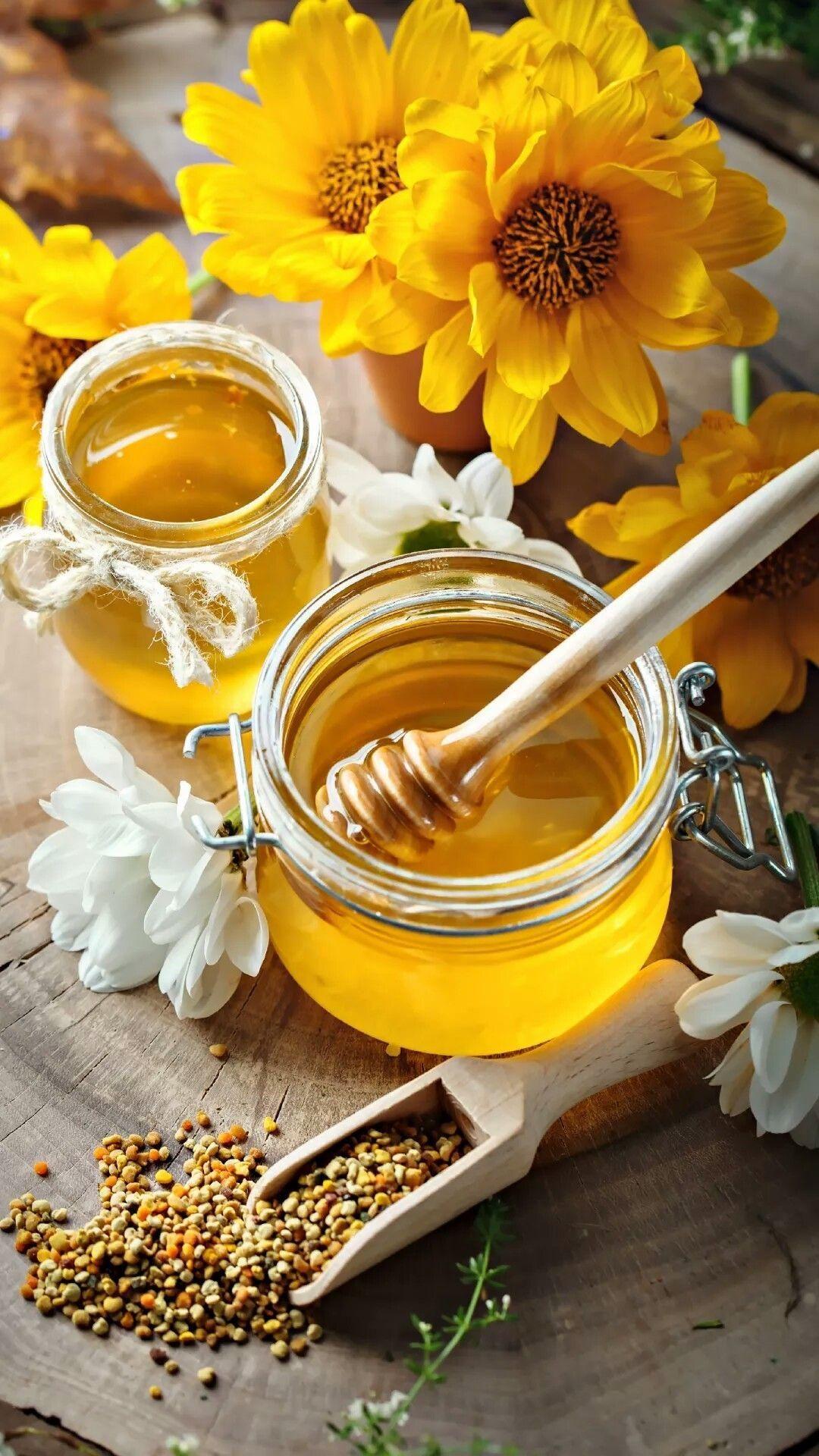
Fish and SeafoodAllowance:
You may bring up to 20kg per person of the following:
● Fresh, gutted fish
● Fish products
● Processed fish (dried, cooked, cured or smoked)
● Lobsters
● Prawns
Are there other non-food items that are restricted or banned?
Yes.The following items are prohibited from being brought into the UK:
● Controlled substances
● Offensive weapons, such as flick knives
● Self-defence sprays, including pepper spray and CS gas
● Endangered animal and plant species
● Rough diamonds
● Indecent or obscene material, including certain books, magazines, films, and DVDs
● Items made from endangered species — such as jewellery, shoes, handbags, or belts — even if legally purchased abroad, unless accompanied by the appropriate permits
There are also restrictions on items like alcohol and tobacco, and specific allowances apply. Full details are available on the official UK government website.
Travellers are generally allowed to bring goods worth up to £390 (including items such as perfume or electronics) into the UK without incurring tax or duty. However, if you are carrying £10,000 or more in cash or equivalent (such as cheques), either individually or as part of a group or family,
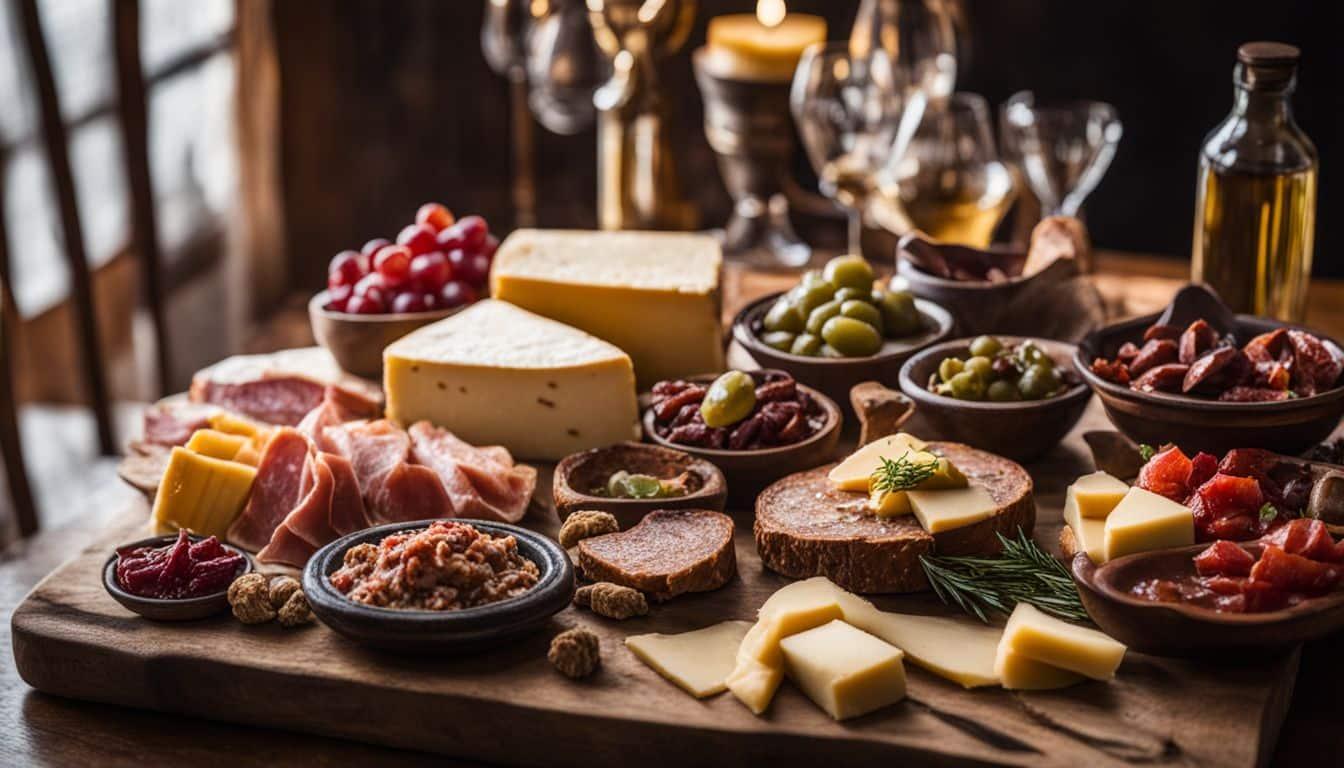

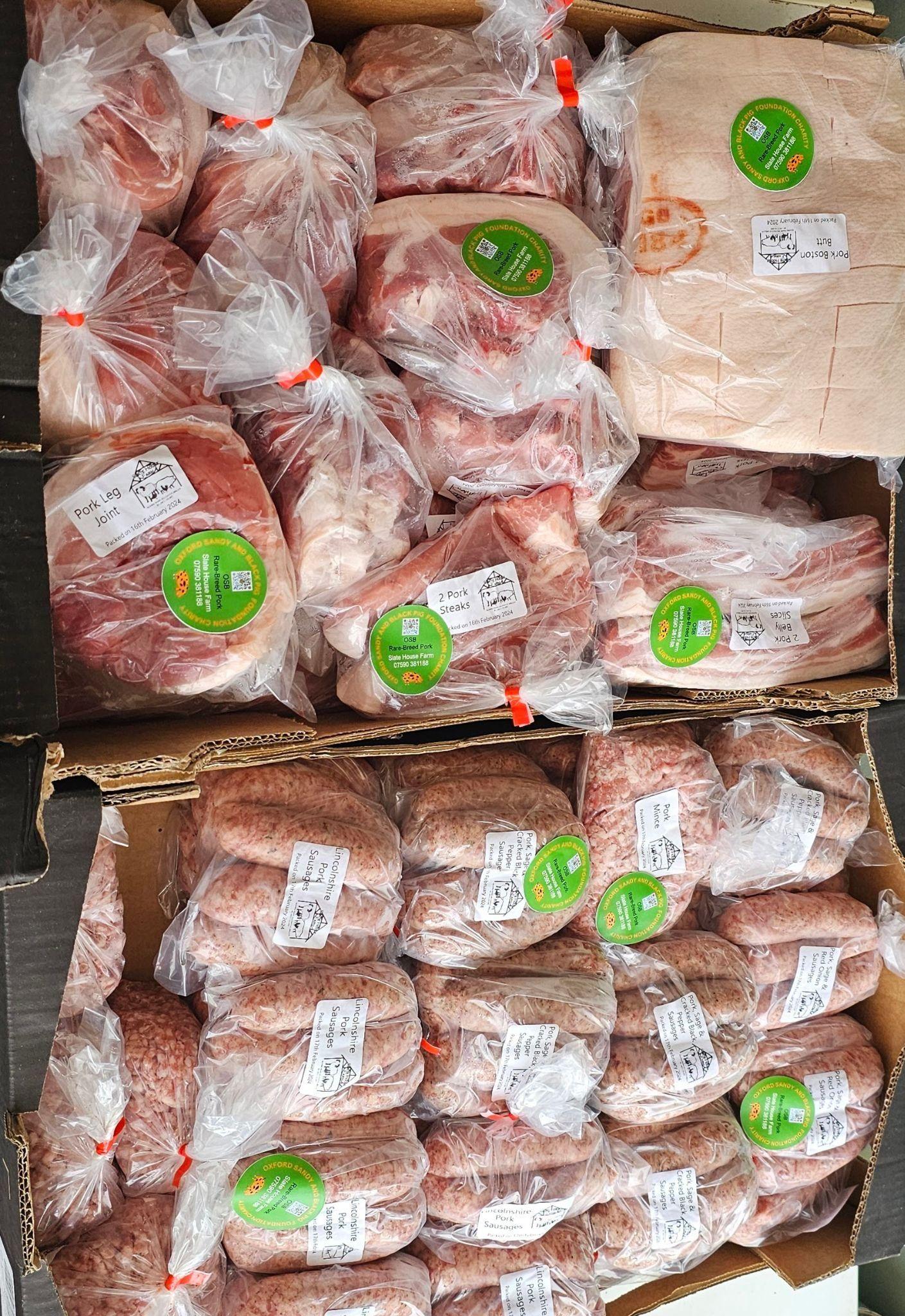

Since we began collecting Oxford Sandy and Black (OSB) pork data in 2022, the growth in production and producer participation has been nothing short of remarkable.This ongoing data collection effort provides valuable insight into trends across the sector, helping producers benchmark performance and improve efficiencies.
From 11,494.50 kg of pork in 2022 to a cumulative total of 58,609 kg by 2025, OSB pork production has seen a fivefold increase. Likewise, the total live weight of pigs processed has risen from 14,300 kg in the first year to 73,441 kg across the four years.
The number of pigs included in the dataset has grown significantly, from just 142 in 2022 to 824 pigs overall.This upward trend reflects not only increasing interest in OSB pigs but also a growing number of producers actively sharing their data. Since the start of this initiative, engagement has steadily improved each year, helping us build a clearer and more comprehensive picture of OSB pork production in the UK.
Over time, the average live weight of pigs has decreased from 100.7 kg in 2022 to 85.07 kg in 2024, before slightly rebounding to 88.82 kg in 2025.The average dead weight followed a similar pattern, dipping from 80.95 kg in 2022 to 68.18 kg in 2024, then rising to 72.04 kg in 2025.
These fluctuations may reflect adjustments in finishing strategies, with producers fine-tuning the balance between growth rates, feed efficiency, and market demand.The partial recovery in weights this year suggests producers are responding to these variables while aiming to maintain high meat quality.
The yield ratio - the percentage of live weight converted to dead weight - has remained consistently strong. It started at 80.38% in 2022, dipped slightly in 2023 to 78.68%, and reached 81.11% in 2025, with a four-year average of 79.80%.This stability underscores the OSB breed’s efficiency and suitability for pork production, reinforcing its value as a premium native breed.
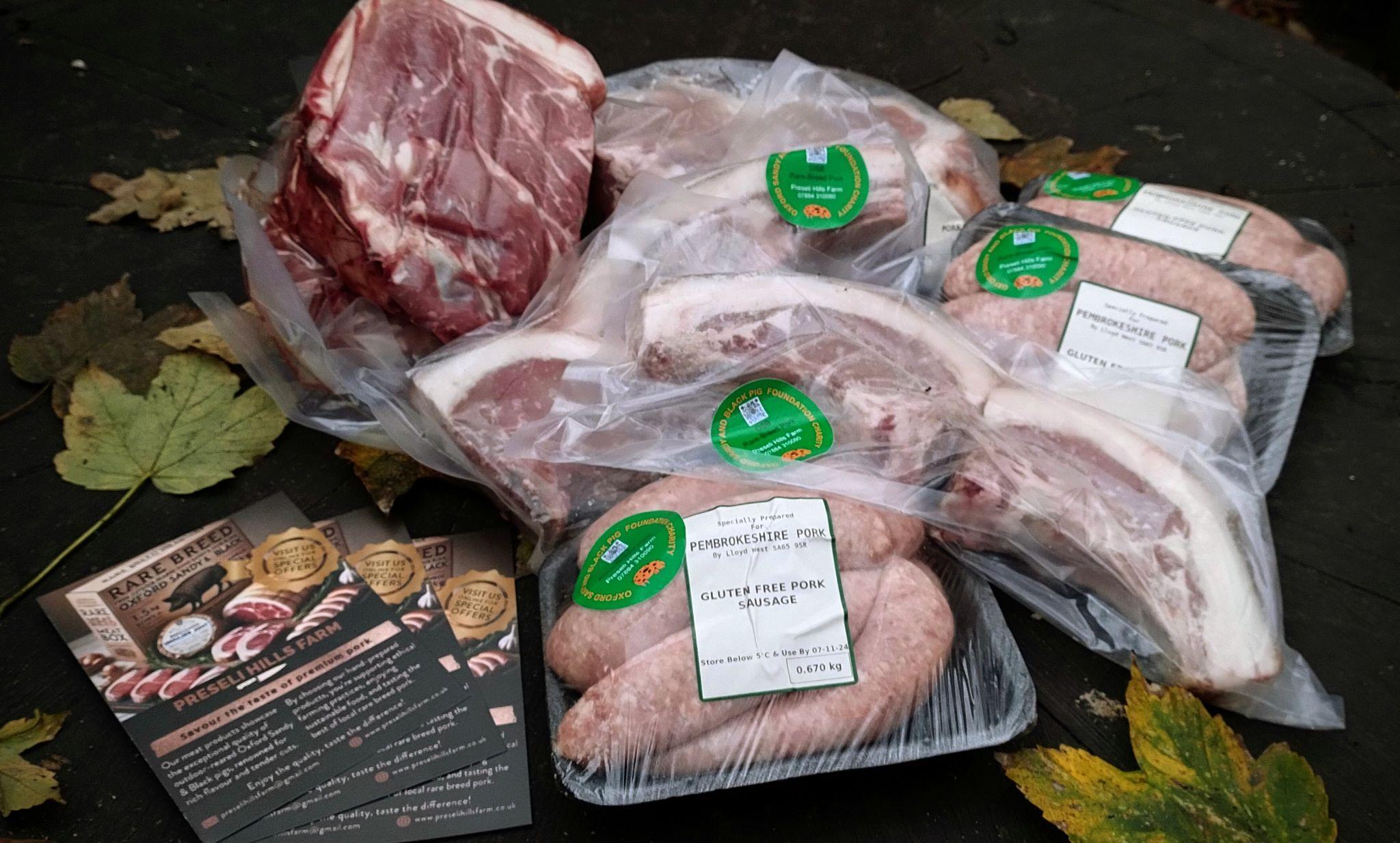
Preseli Hills Farm
Nic & Mikhaila Caine
Tucked away on a remote hillside of West Wales, where the winds whistle, the rain pours and the views stretch out over the Preseli Hills, you’ll find a smallholding that’s big on heart and pigs, ambition and optimism. Welcome to Preseli Hills Farm - the home of a growing herd of Oxford Sandy and Black pigs, a few honey bees, one grouchy cat, and two humans who decided life was too short not to raise pigs on a soggy Welsh hillside.
We’re Nic and Mikhaila, the people behind Preseli Hills Farm – a new, small farm nestled on the Carmarthenshire-Pembrokeshire border, overlooking the Preseli Hills. We’re slowly transforming this patch of land into a small-scale, sustainable, mixed farm – starting with our beloved pigs, some beehives, and some ambitious (and often naive) plans for the future.
Our ethos?Ahappy, healthy quality of life for us and our animals. Good food for our family and our community. Minimal stress. Maximum fun. Muddy boots.And plenty of tea!
Like many farming stories, ours started with a couple of pigs … and a mid-life epiphany.
We’ve been friends since our university days studying computing. Life took us on separate (and occasionally overlapping) journeys through software development, academia, California, Norway, and more than a few late-night debugging sessions.After years of deadlines, laptops, and city noise, we found ourselves dreaming more and more about a different kind of life – one where we could get outside, (try to) grow our own food, and swap the quiet click of a mouse for the loud snort of a pig.


Our first farrowing was Margot’s.Thankfully, she knew what she was doing. We, on the other hand, were completely new to it. Margot was calm, competent, and patient with her two flustered humans. Betty followed with an equally smooth farrowing and a similar level of unimpressed tolerance for our well-meaning hovering. Both Margot and Betty proved to be excellent mums. Margo is currently back in pig and due in early May.And as for Brian… he’s possibly the least attentive father on the planet, but he gets the job done and is an excellent visual deterrent for any strangers thinking about wandering into the field. He looks like an intimidating tank, but he’s actually a gentle giant and daft as a brush.
In summer 2024 we added some new piggies into the mix with 11 weaners from Kim at Folly FarmOSB/Saddleback crosses. Loud, mischievous and extremely friendly, they became local celebrities just before Christmas. While we were in Cardiff delivering meat boxes, we received an unexpected phone call from our neighbours.Aphoto had been posted on the local Facebook group: a gang of pigs trotting merrily down the road. Our pigs.
Being two hours away, there wasn’t much we could do but down our coffee and head straight home.Amazingly, by the time we got back, three of our lovely neighbours had rounded them up and popped them safely back in their paddock.The pigs were delighted. So were wemostly with our neighbours, slightly less so with the pigs.

More recently, we welcomed Marion (Mary) to the farm - another breeding gilt from Jay - giving us a fourth bloodline and even more excitement for the future. With two sows, two gilts, and one very laid back boar, we’re now in a good position to keep growing the herd and contributing to the OSB gene pool.
One of the best things about farming here is the local community. Shortly after we got started, Nic was contacted by Farming Connect to help form a group of local pig producers with a view to promoting high-quality Welsh pork.That led to the formation of Pembrokeshire Porc Penfro Cyf, a collaborative community of pig farmers across Pembrokeshire, Carmarthenshire and Ceridigeon.

The longer term aim is to expand this idea by growing a Wales-wide community, emphasising local produce, high animal welfare and full traceability of pork from farm to fork.
We also work closely with Lloyd West Ltd – a new abattoir business set up by Martyn and Danielle Lloyd in Fishguard, expanding on their already established family farm. It’s the only abattoir in West Wales accepting pigs, and their support to us and other pig producers through Pembrokeshire Porc Penfro has been invaluable. We now know more about abattoirs, equipment, processes and regulations than we ever thought we would, giving us a whole new level of appreciation for what happens beyond the farm gate.And thanks to Danielle we’ve also learned a lot more about butchery and making sausages.
Between the Porc Penfro network, our wonderful neighbours and the OSB Pig Foundation Charity, we feel incredibly lucky to be part of a supportive, knowledgeable, and pig-obsessed community.
As we continue to grow Preseli Hills Farm, one of our key goals is to offer high-quality pork products directly to customers through our rare-breed meat boxes, available to buy through our website.These boxes allow us to share the flavour and quality of rare-breed pork with others, highlighting the benefits of native rare breeds that are raised with love and care. We want to show that quality, ethically reared meat doesn’t have to be expensive, and persuade people to move away from supporting horrific intensive pig farming practices.
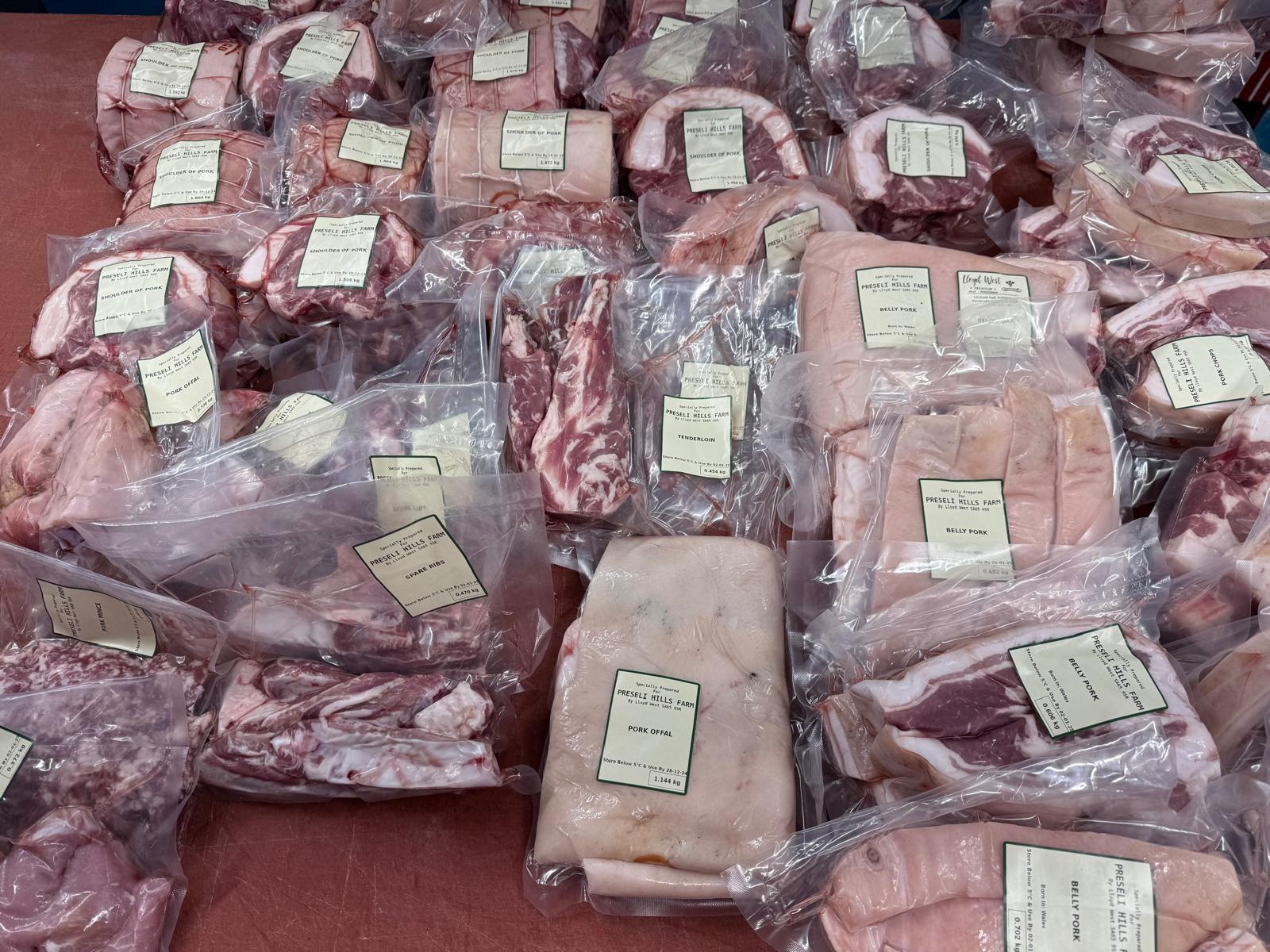
Although this part of our business is currently small, it’s an important part of our business as we aim to expand our reach and connect with the community.And in addition to direct sales, we’re working to supply local businesses, including restaurants, with our pork.Though we’re in the early stages, we’re excited to build these relationships and ensure that the local market enjoys the best of what our pigs have to offer.
We’re still juggling day jobs with farm work (and a lot of mud). But the goal is to keep building - our pig herd, and our ability to supply top-quality, locally produced pork.
We’ll continue raising and selling weaners, producing our own meat boxes, and (eventually) offering our pork at local markets and events. We’re exploring on-farm butchery and processing facilities to give us more control over what we make and sell - think sausages, bacon, joints and charcuterie.
Further down the line, we’re looking to expand into horticulture – veggies, herbs, and maybe a few fruit trees. We’re also building a little workshop, so we can eventually get back to hobbies like woodturning and carving, puppet-making and model-engineering. It might take time, but we’re in no rush. One trotter at a time!
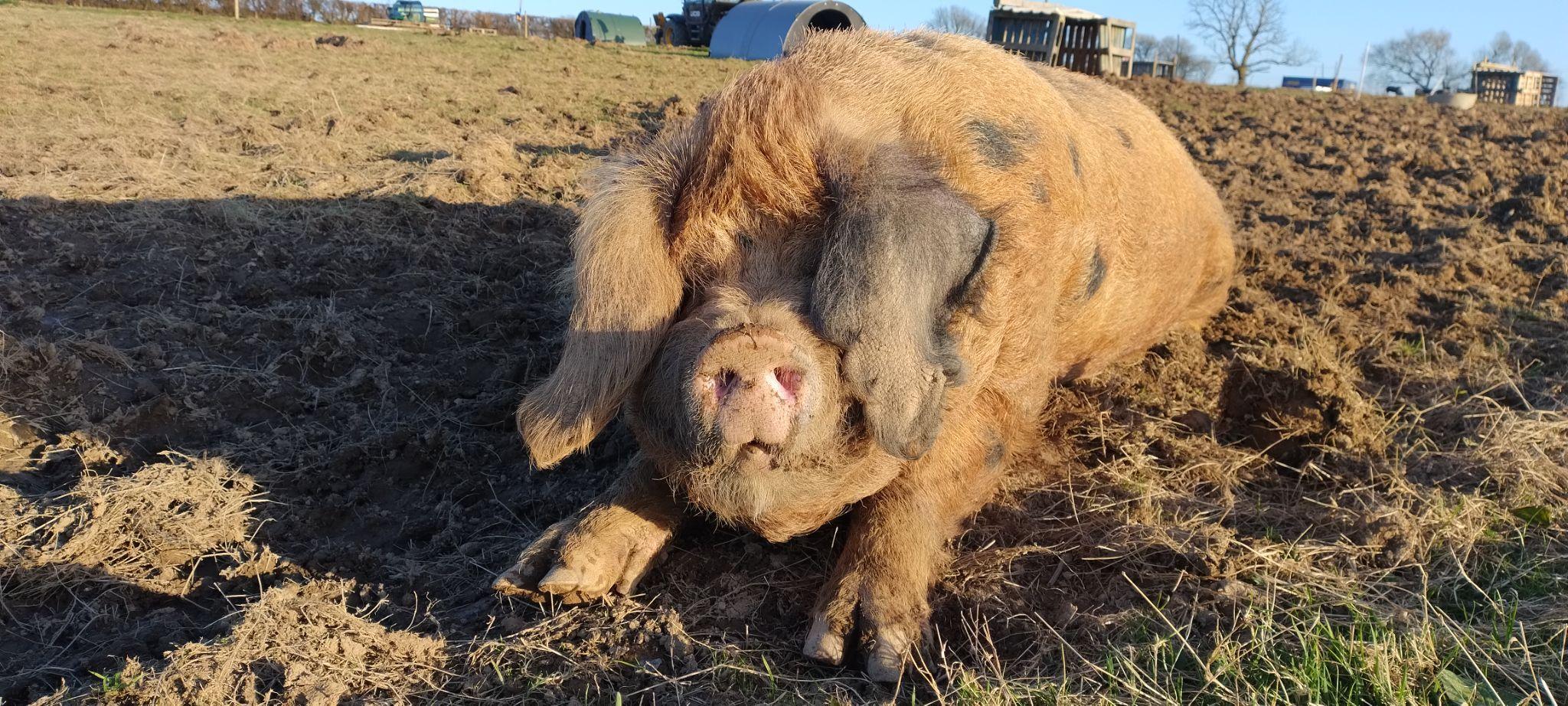

We’re still new to this, and there’s a lot left to learn. But raising Oxford Sandy and Blacks has been one of the most joyful, grounding, and satisfying experiences of our lives.They’re gentle, clever, and surprisingly hilarious – and they’ve helped us find not just a new lifestyle, but a new community too.
If you’re ever passing through the Preselis, keep an eye out for a big ginger boar, some excitable piglets, and two muddy but happy humans who finally decided to follow the dream.
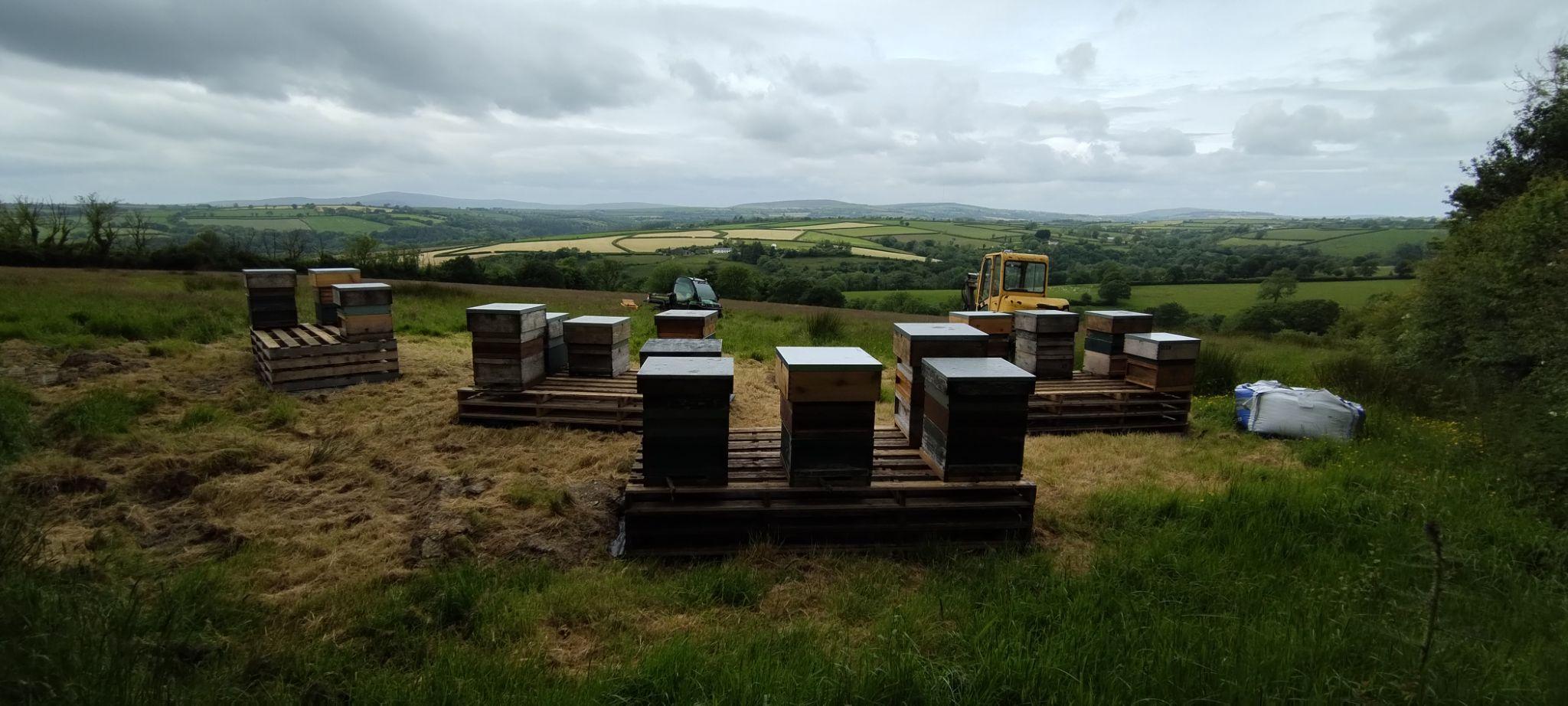




As we welcome spring, it is time to look back at the farrowing activity from the first quarter of 2025.Across the UK and Ireland, the Oxford Sandy and Black Pig Group Charity breeders have been busy, and we are pleased to report a strong start to the year with consistent farrowing results from January to March.

Below is an overview of this quarter’s activity and some notable highlights from the data.

Between January and March 2025, a total of 66 farrowings were recorded across 14 counties and regions including Wales, Scotland, Ireland and England.
Overall Totals:
● Gilts Born: 333
● Boars Born: 367
● Total Piglets: 700
This gives a nicely balanced ratio of gilts to boars, with boars making up 52.4% of the total.


● South West England remains the busiest region, contributing 32 farrowings and 340 piglets, nearly half of this quarter’s total.
● Wales followed with 10 farrowings and 90 piglets.
● Central England saw 8 farrowings resulting in 69 piglets.
● Notably, both Scotland and Ireland recorded 6 farrowings each, reflecting the growing interest in OSB breeding further afield.

The largest single litter was recorded in Gwynedd, Wales, in January, where Cynthia (sow line) andAlistair (boar line) produced 13 piglets.
● Lady and Clarence, in Essex (January), also farrowed a remarkable 13 piglets.
● Several litters of 12 piglets were recorded in February, demonstrating strong consistency in litter size across multiple regions and breeding pairs.

● Gertrude, Cynthia, Iris and Gloria were the most active sow lines, collectively producing over 230 piglets.
● On the boar side, Jack,Alistair,Alexander, and Clarence remain popular choices, with Jack featuring in 24 farrowings this quarter alone.
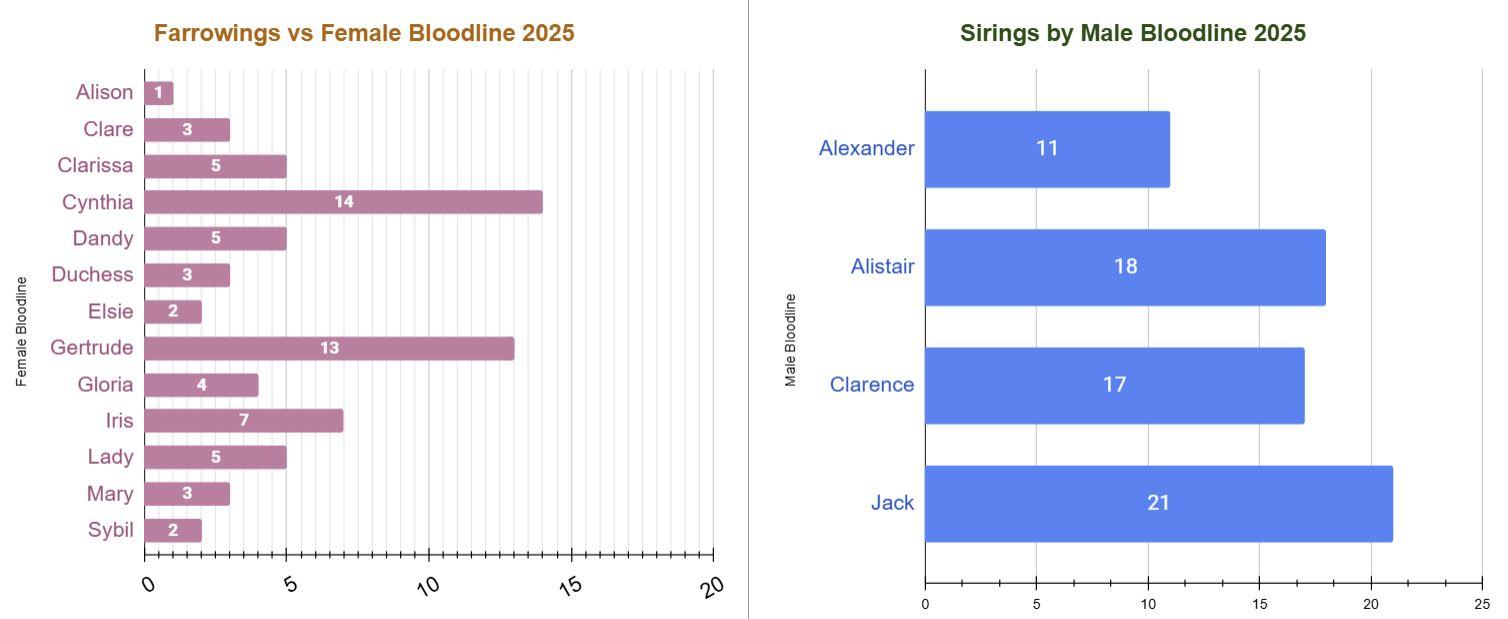
The first quarter of 2025 has delivered a solid and encouraging start to the year for OSB breeders.The spread of farrowings across the UK and Ireland shows a healthy level of activity, and the consistent litter sizes suggest good herd health and careful breeding management.
An enthusiastic eye will be kept on the numbers as the year progresses where we look forward to reporting on Quarter 2 later this summer.


Louise Blenkhorn, BSc(Hons), BVM&S, MRCVS, is an independent pig veterinary consultant and a pig farmers daughter. Louise's private life is just as busy. Amother of two to Emma andAva. Louise and her husband Neil, run a successful herd of Limousin beef cattle.
The recent ‘zinc ban’i.e. the removal of Zinc from creep feeds, has led to a rise in the incidence of post weaning diarrhoea (PWD).
This is often seen as a watery yellow brown scour seen in the first week after weaning. Piglets often run off and become dehydrated. Mortality is dependant on the severity of disease, challenge and other health and management factors. The most common cause of the scour is E.coli.This can be easily (and cheaply) confirmed by taking a faecal sample from an untreated piglet and submitting it for culture and sensitivity via your vet.
Understanding and controlling the risk factors for PWD is key to control Firstly, we need to remember that piglets are susceptible to E.coli proliferation in the gut as they transition from sow milk to carbohydrate-based diets. Ensuring that good creep feed intakes are being achieved prior to weaning will greatly prepare the piglets gut and reduce the likelihood of scour. It is worth remembering that if you use more than one creep diet, all changes must be made gradually, with blending food between each creep and follow on diets. Sudden changes in feed should be avoided. Post weaning, creep feed intakes should be encouraged by providing enough trough space for all piglets to eat together at the same time (as they would when suckling). Do not overfill troughs; feed little and often.The physical act of feeding encourages intakes in itself. Store creeps in a cool dry area. Ensure water is clean and freely accessible – pigs which do not drink, will not eat.
I mentioned the word clean above – that not only goes for the water system, but also the housing. Piglets should only enter housing which has been fully cleaned (using a detergent and disinfectant) and allowed to dry prior to filling.This extends to include the feed and water troughs. Ensuring that accommodation is warm and draught free is also important as temperature fluctuations and fast moving air speed are triggers for scour.
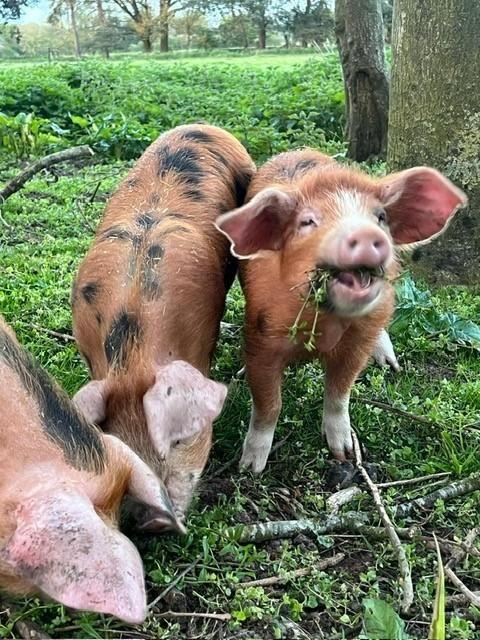
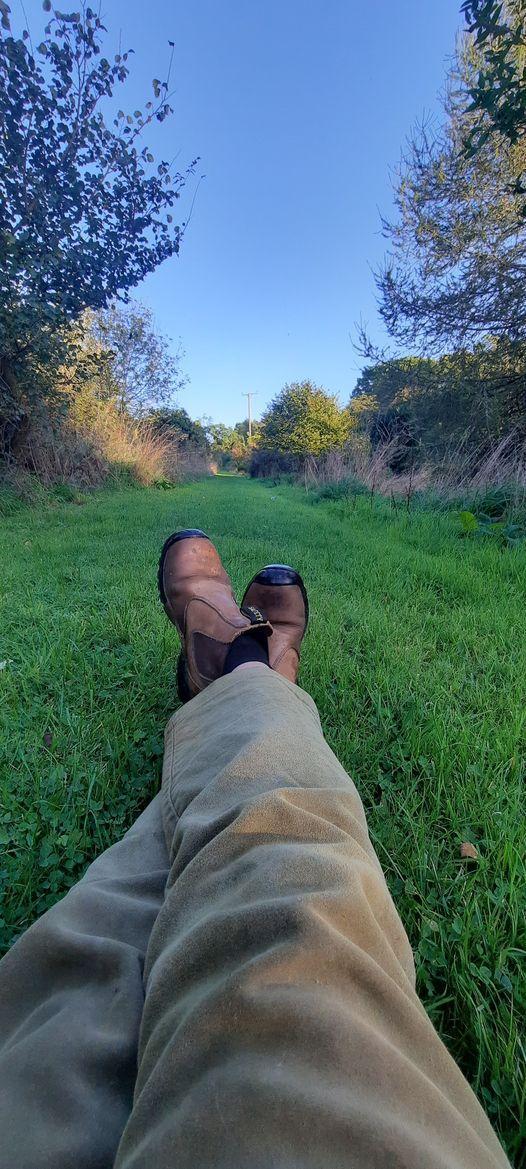

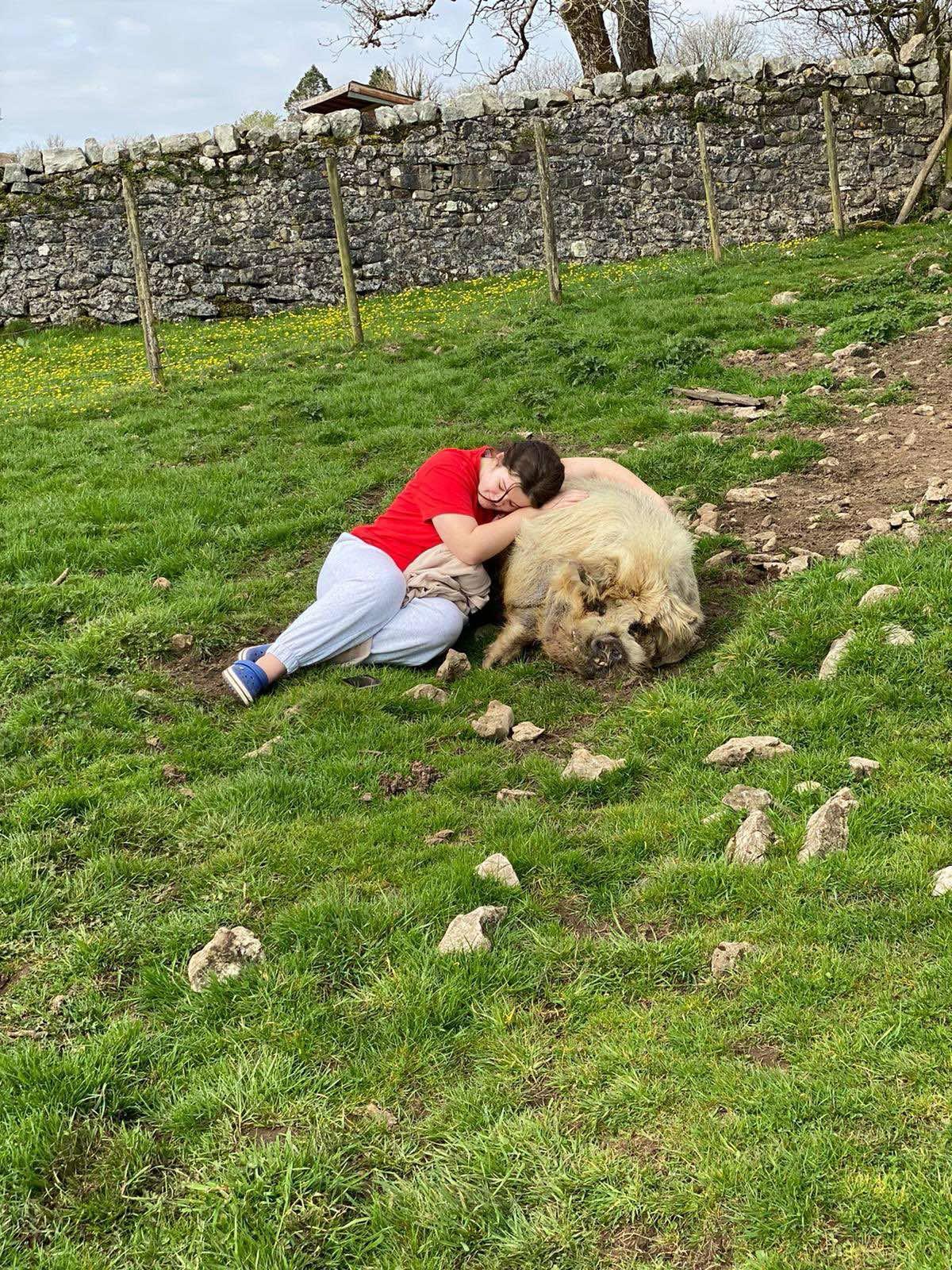
Going up the farm as a child most days of the week I would spend hours sitting Borris playing his music to ‘see what he enjoyed’, I became utterly convinced that he was an Ed Sheeran fan! Despite how silly it was, sitting with Boris in an empty field brought me a sense of relief that is hard to find anywhere else. In 2021 I started suffering badly with anxiety whilst sitting my GCSE exams. My dad and I discovered that sitting with Borris alone and having that time away from everything was the only thing that really helped me and calmed me down. Pig keeping has been an avenue to release stress and a source of constant enjoyment for me throughout my life.

In October 2023 Borris passed away. I was distraught and missed having that presence on the farm. I knew that I was never going to be able to replace Borris, leading me to decide that when I eventually bought pigs again they had to be a total opposite. In January 2024 everyone was missing the presence of the pigs on the farm, however everytime I nagged my grandparents to get more (and believe me I did nag) they told me no.
My dad and I started to devise a plan… we thought why not have a full circle moment and surprise my grandparents with two piglets on Father’s Day.That’s when we started looking for pigs for sale. I came across Oxford Sandy and Blacks on a listing for piglets and fell in love with the breed as soon as I saw them. I spent time researching their temperament and needs which I soon discovered was starkly different to my previous Kune Kunes as Borris had been quite happy not to use his stubby legs and lounge around all day.Their lively personalities and friendliness is what attracted me to Oxford Sandy and Blacks. We decided that this was the perfect breed for the farm. My grandparents mainly keep rare breed goats so the fact that OSB’s were a rare breed felt right.
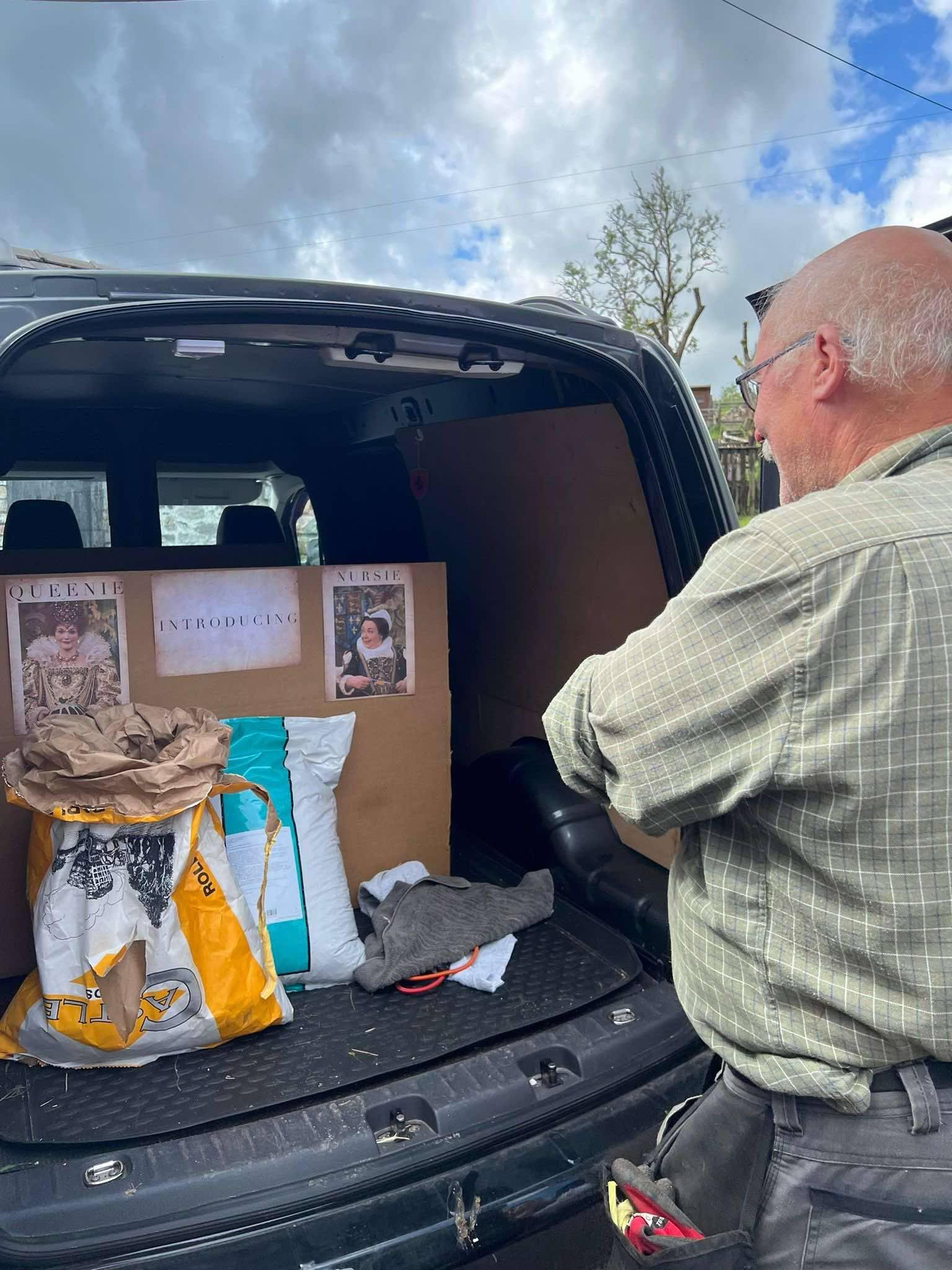
My dad and I arranged to pick up two gilts, one registered and one unregistered on Father’s Day and bring them straight to the farm in boxes we had made with… Queenie and Nursie pictures from BlackAdder posted on the boxes. We thought that seeing that one was registered she should be the Queenie and the unregistered one would be Nursie.
I was in love from the moment we picked them up, their long legs and blue eyes made it possible not to! We drove them back to the farm and told my grandparents we had got my grandfather some chickens for him in the back of my dads van.Totally unsuspecting he came out to the van to have the shock of his life, not chickens but two piglets looking back up at him.After the initial moment where my father and I thought we were done for, my grandfather laughed simply stating “what have you done now”.
That brings us to now and the more hands-on role I have in pig keeping on the farm. We built their enclosure with my partner who works on the farm on weekends and built them a brand new ark as they quickly outgrew Borris’old one.The work was worth every moment seeing them do laps around their new pen like racing horses.Although Queenie and Nursie are my favourite characters ever they love to be nuisances! From being masters at escaping and taking the gate off its hinges to jumping in our utility vehicle, their latest way to pester us is tipping over their 8 gallon water tub into their wallow despite it already being full of water! Despite all of this I wouldn’t change them for the world.

The FREE application from the Oxford Sandy and Black Pig Foundation Charity #1190469 (England & Wales) SC052662 (Scotland) .

Our app gives you access to all our key info and tools whilst you're on the move.Tools such as:
- Pig WeightTool
- Farrowing DateTool
- Standstill Calculator
- Feed Calculator
-Abattoir Checklist
-Access to our Breeders Map
- GSAProgram
- and loads more
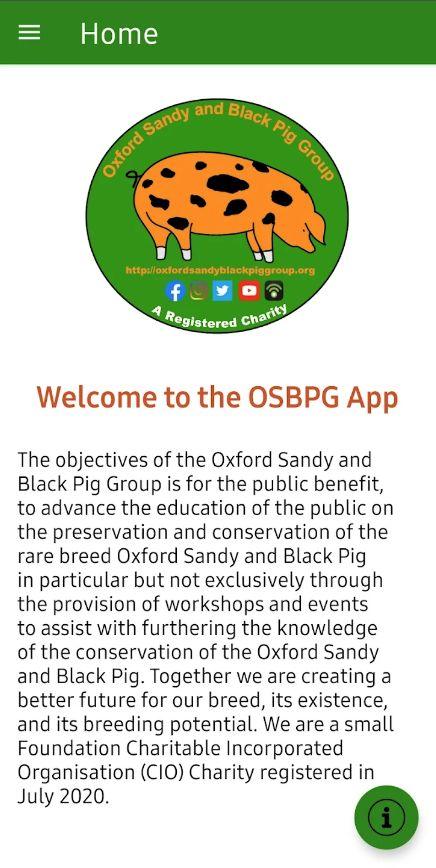

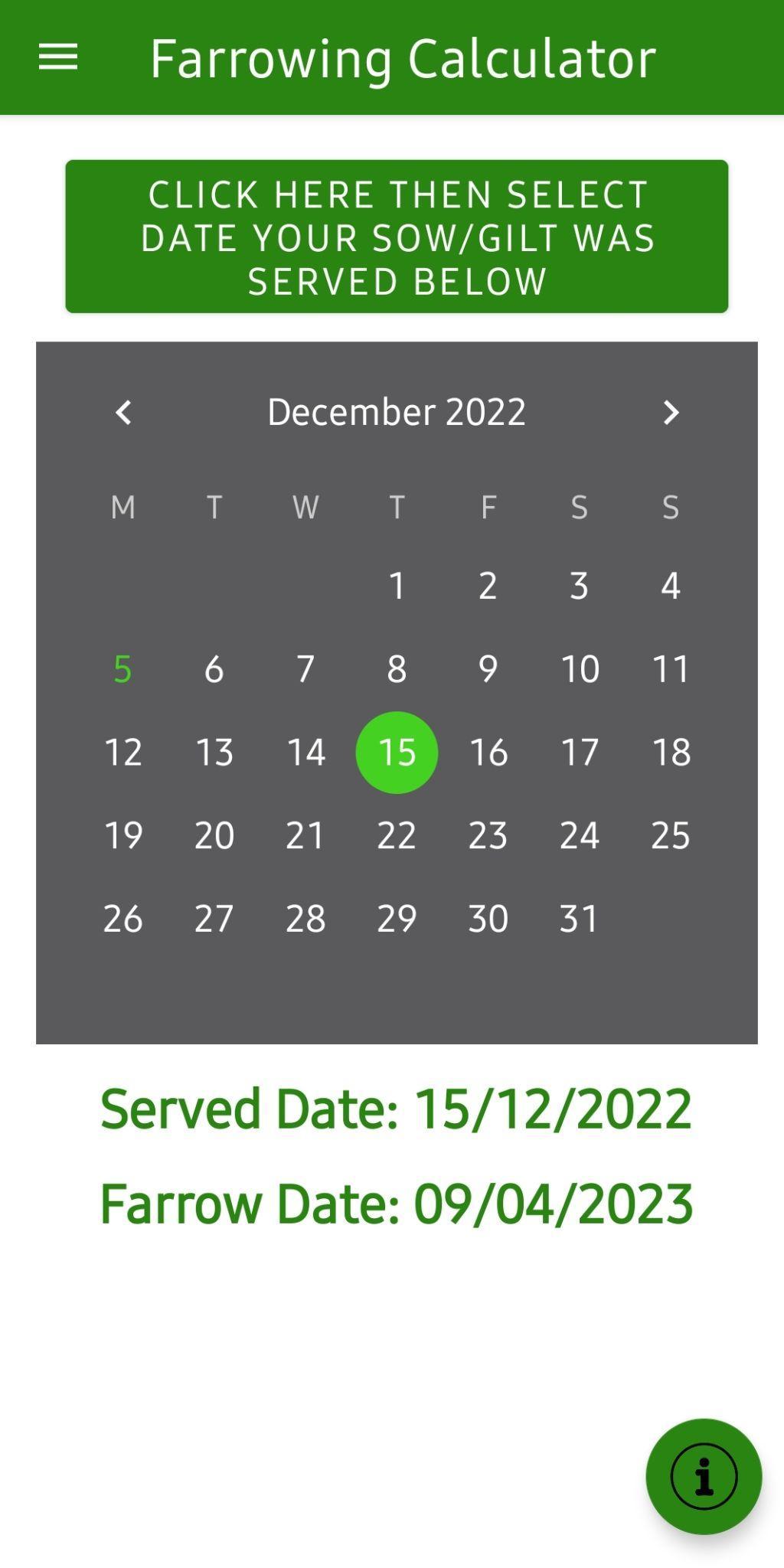
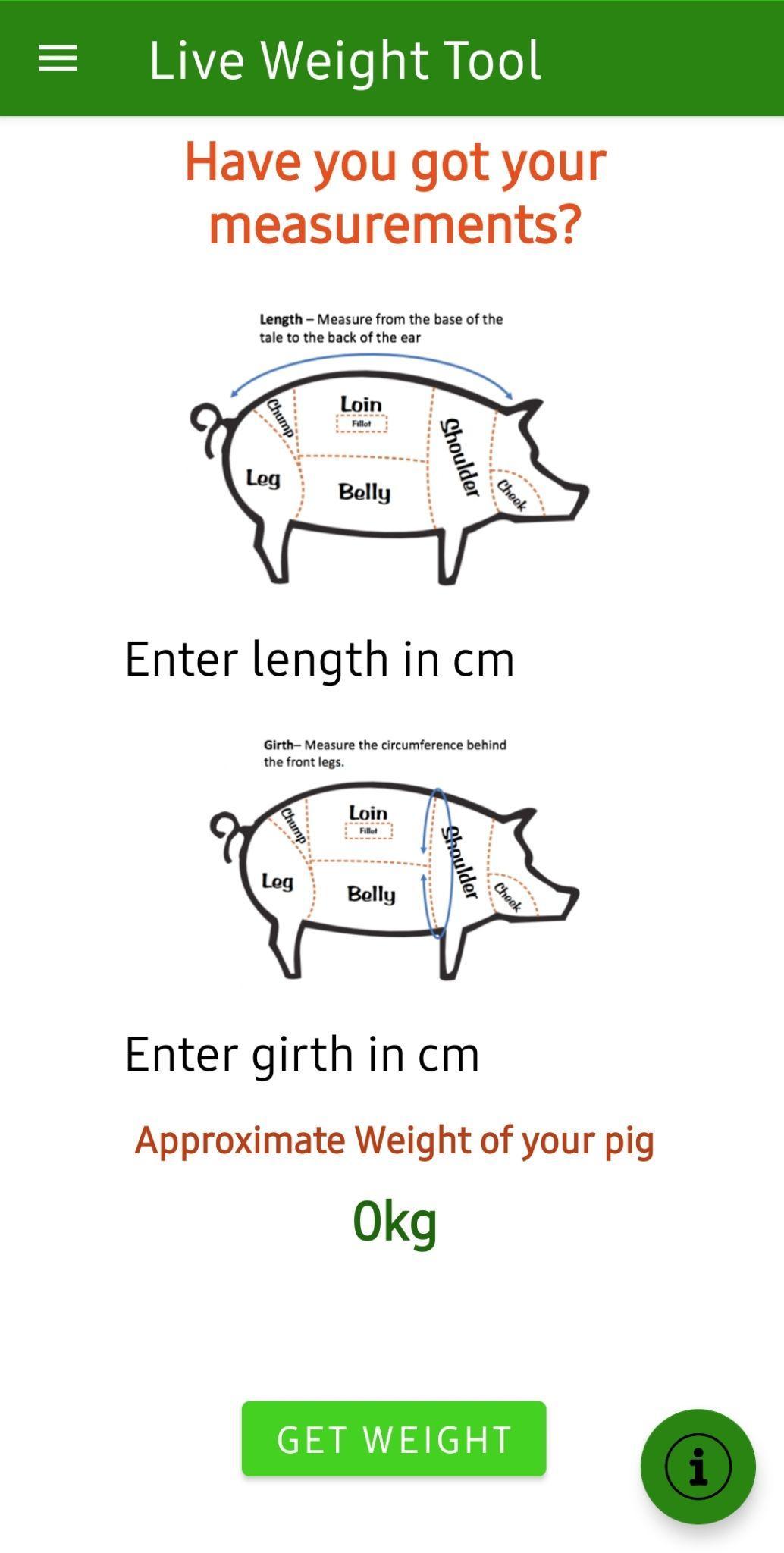



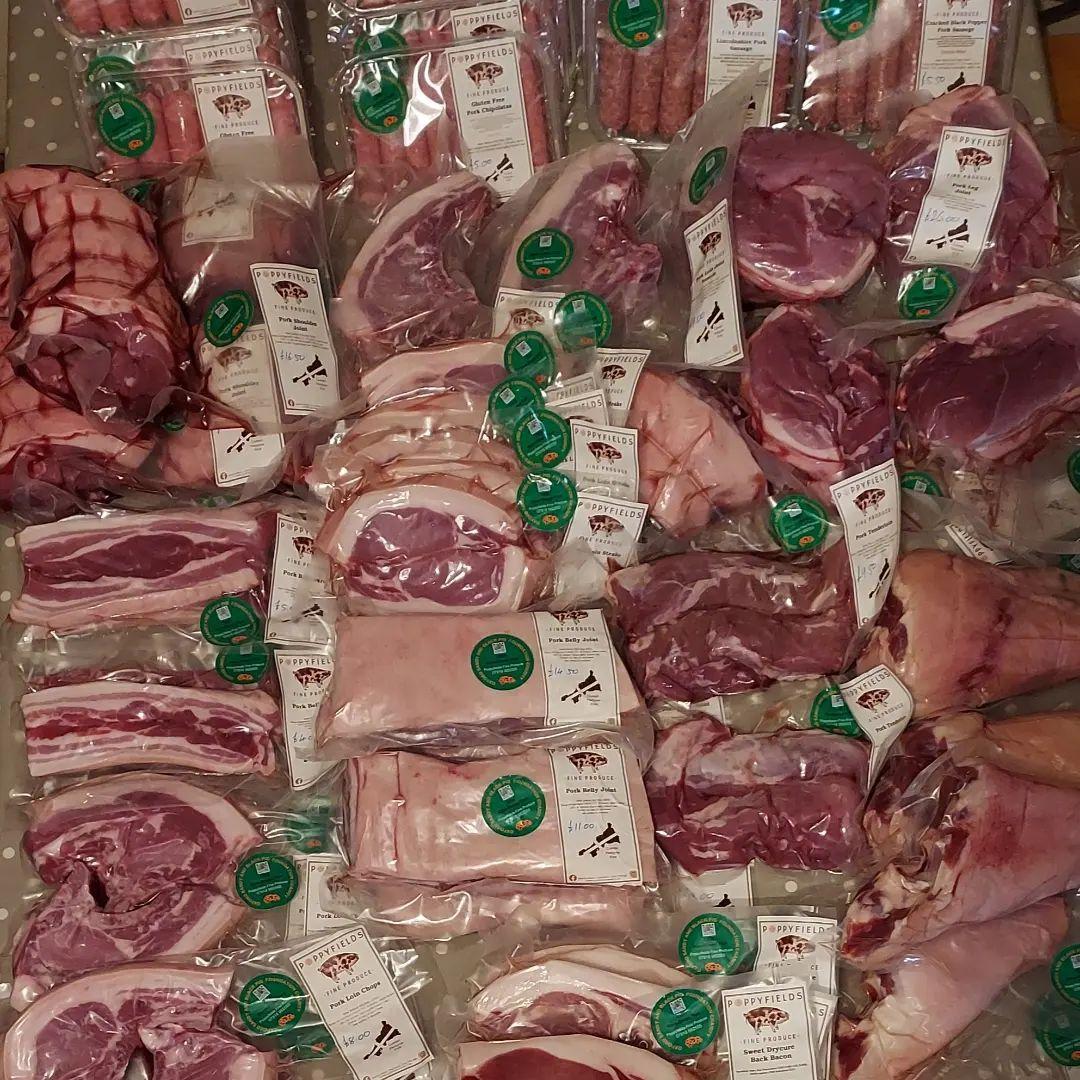
The OSBPG Foundation Charity is always thinking of ways to help our independent pork producers.
Our pork is first and foremost as it is representative of our breed, its flavour, its texture, its colour and its versatility. The OSBPG Charity recognise the hard work and dedication from our independent producers, breeders and keepers of the Oxford Sandy and Black pig. Furthermore, we see the value in what you do, and as such Kathryn Green-Smith has designed the OSBPG Charity Pork labels. The labels are free, personalised and are in recognition of the value that you show in producing OSB Rare Breed pork.
Just like Mr. & Mrs. Edmond of Poppyfields Fine Produce, you can also own your free 150 OSB Pork Labels here .

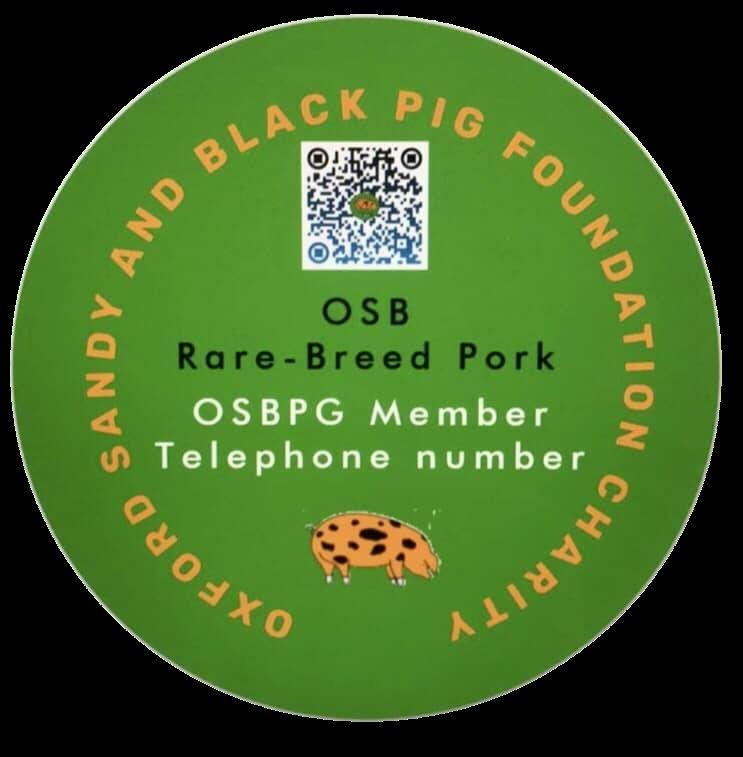
If you’re looking for weaners, wonderful OSB Pork, breeding stock, or boars to hire, then look no further than our Interactive “Breeders and Producers Map” We have over 100 breeders and producers located all over the United Kingdom and Ireland. So if your looking pop on over to our website and see who is near you.

If you’re an OSB Pork Producer or Breeder yourself, then why not get yourself listed for “FREE” on our map. Our website has over 3,000 visitors every month, with hundreds looking for OSB Pork, Breeding Stock and Weaners.
Click here to add yourself to our map for “FREE”








